The long haired chihuahua dogs are small and feisty little creatures. So, if you’re planning on getting one for yourself, make sure to go through all the details given below.
To give you a heads up, long-haired chihuahuas are special dogs who need a lot of attention, maintenance, grooming, and patience. In addition, the dog cannot tolerate children around and might injure someone if triggered.
Being someone who has rescued chihuahuas and many other dog breeds, I have to say that chihuahuas are a piece of work.
So, read along if you are seriously into bringing a long-haired chihuahua home!
A Quick Glimpse into Long-Haired Chihuahuas Characteristics
Here are a few important details of long-haired chihuahuas in a nutshell if you are in a rush and don’t want to miss out on the information covered below. This table will also give a quick introduction to long-haired chihuahua.
| Weight | 3 lbs to 6 lbs |
| Height | 6 to 9 Inches |
| Fur Coat | Long and Silky fur |
| Maintainance and Grooming | Above average for long-haired chihuahua |
| Temperament | Energetic and high-tempered |
| Children-friendly | No |
| Other Pet-friendly | Rarely |
| Energy Level | Moderate to high |
| Training Ability Level | Average |
| Lifespan | 14 to 20 years |
| Barks | Highly Vocal |
What is the long-haired chihuahua breed?
A long-haired chihuahua is a small dog breed with a long, shiny hair coat. It is one of the types of chihuahua dogs but even cuter looks. This breed is also known as one of the smallest dog breeds in the world.
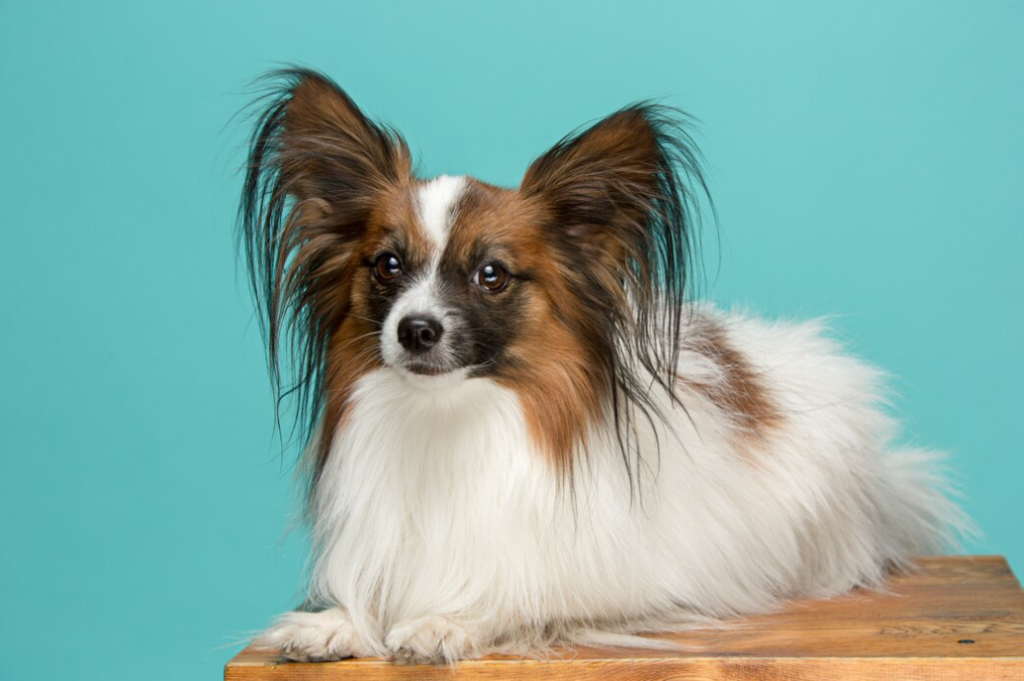
Long-haired Chihuahua Origin and History
The Chihuahua, one of the oldest dog breeds still in existence, has its roots in Mexico. The Techichi, which the Toltecs introduced, and the Aztecs later changed into the smaller, lighter dog that we now know as the Chihuahua, is the ancestor of this breed.
According to research and anthropological studies, a dog resembling the current Chihuahua initially appeared around 100 AD. Chihuahuas were bred by the Aztecs for a variety of functions, including companionship, ceremonies, food, and religious reasons. It is thought that the Chihuahua was first raised in the Mexican state of Chihuahua, hence its name.
The Chihuahua is crucial to understand that the main distinction between long-haired and short-haired (aka, smooth-coat) Chihuahuas is the length of their coat.
It was thought at the time that the Chihuahua was crossed with a different small breed, like the Pomeranian, to create this longer coat, but the long hair is actually a natural variety of the Chihuahua.
Chihuahuas first entered the United States in the 1800s, with the long-haired variety of the dog being more popular.
The American Kennel Club registered and approved the first Chihuahua in 1904. A few years later, Chihuahuas started producing champions and gained popularity in shows.
The popularity of the Chihuahua breed (short and long-haired) increased in the 1940s and 1950s as they started frequently appearing in television programs and popular culture.
Additionally, because of their notoriety, they were given roles in more recent movies, including ‘Legally Blonde’ and ‘Beverly Hills Chihuahua.’
Long-haired Chihuahuas are still a preferred breed today among people and families who want an active, independent dog that requires little upkeep and is fiercely devoted to them.
What does long-haired chihuahua look like?
The small dog, known as the long-haired Chihuahua, is admired for its attractive looks. Despite being a little smaller, they have rounded, apple-shaped heads, huge and expressive eyes, and a compact, well-balanced body.
Referring to the structure of the skull, the long-haired Chihuahua can have one of two types: an apple-shaped head or a deer-like head.
Deer-head Chihuahuas have lengthier noses and flatter foreheads, while apple-head Chihuahuas have a bit more noticeable forehead, cylindrical heads, and a bit shorter snouts.
They have straight ears that are unusually big for their heads. They have a snout that is somewhat short and curved. Furthermore, their expressive, big, wide eyes tend to be either light or dark in hue. Black long haired chihuahua and brown long haired chihuahua are the most preferred types in long-haired chihuahuas.
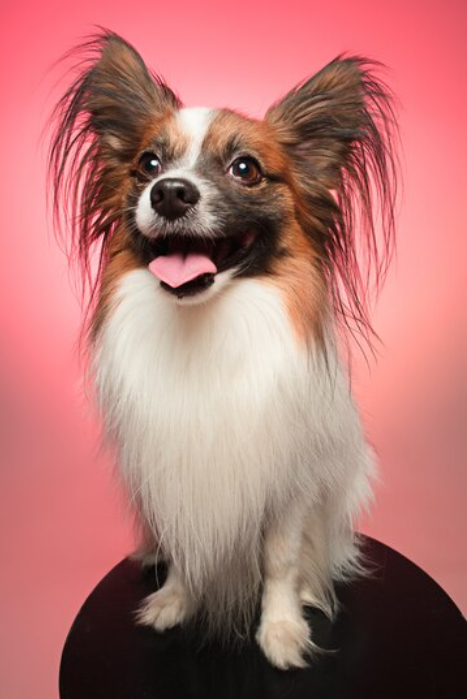
How are long-haired chihuahua’s temperament and behavior?
Both varieties of chihuahuas are members of the same breed and share many of the same traits.
Chihuahuas with long hair only have a genetic difference that results in longer, fluffier fur.
The idea that long-haired chihuahuas are temperamentally different is a widespread one.
This is completely untrue! The same variety of personality types as people with shorter hair are typically present.
Every dog, of course, has a unique personality. This is influenced by the genetics and life experiences of the particular dog.
The chihuahua’s parents’ characteristics and socialization as puppies may be important factors. The length of the dog’s fur has absolutely nothing to do with it.
How to maintain and groom a long-haired chihuahua?
Chihuahuas have a long coat that needs to be brushed out regularly to remove built-up dirt and avoid knots and matting.
Short-haired chihuahua owners don’t have to worry as much about these issues, but long-haired chihuahua puppy owners must be aware of them!
Many individuals neglect to brush their dog’s tail. The long strands of tail hair, however, are particularly necessary to brush because they can quickly gather up dirt and dust particles.
A few times per week, the parents or caretakers of a hairy chihuahua must check and comb the dog’s tail.
Your long-haired chi can require more frequent bathing than a chi with short hair. Due of his low standing, he could take up dirt or other small particles. He might also end up with poop or urine in his hair. Ugh!
Your long-haired chihuahua’s hair might become tangled very rapidly if you don’t brush it.
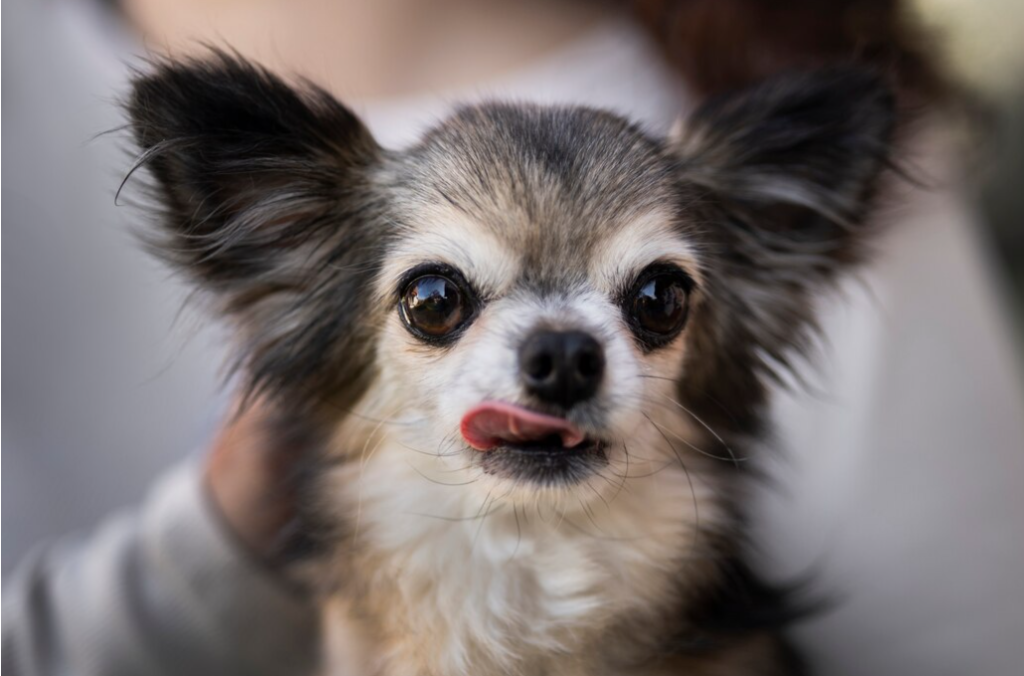
What is an ideal place for a long-haired chihuahua to live?
A home that comes under the following conditions is an ideal place for a long-haired chihuahua to live:
- A small-sized house or an apartment
- A home without any small kids to avoid injuries as long-haired chihuahuas don’t go well with children.
- A home with one person in the house all the time, such as a house with retired people, old people, or people who work from home.
- A home where the other dogs are smaller, as long-haired chihuahuas might get injured by getting into fights with larger dogs.
- A house with non-allergic people residing as they shed a lot of their long fur.
What is the lifespan of a long-haired chihuahua?
One of the dog breeds with a longer lifespan is the long-haired Chihuahua. A Chihuahua with long hair should live between fourteen and twenty years.
A happy, healthy life will extend the lifespan of your long-haired Chihuahua to the higher end of this range, whereas an unpleasant lifestyle, excessive stress, or health issues may reduce this expectancy.
Which common health issues do long-haired face in their lifetime?
Patellar Luxation is one of the main health issues for the chihuahua breed.
Being able to move the knee joints properly is severely affected by this ailment, which may eventually cause osteoarthritis.
Dogs frequently suffer from luxating patella, particularly those belonging to the little and toy dog breed categories. Between the ages of four and six months, this illness frequently starts to show symptoms.
Depending on how severe it is, a luxating patella may require medication or perhaps surgery.
They may also acquire additional severe medical disorders, such as keratoconjunctivitis sicca, hydrocephalus, pulmonic stenosis, and a heart murmur.
In the end, chihuahuas with both short and long hair are just two variations of the same species of dog. Because of this, they have a lot in common.
Despite their similarity, long-haired chihuahuas have unique traits and difficulties that owners and dog enthusiasts should be aware of.
Consider checking the breeder, Price, and Size of long-haired chihuahuas
Backyard breeders, commonly referred to as mills for puppies, are thought to be to blame for the existence of this type of dog. The chihuahua puppy has always enjoyed huge popularity due to its status as a popular and fashionable breed.
Backyard breeders are individuals who produce Chihuahua puppies more for financial gain than for pedigree.
This eventually means that when we encounter this kind of chihuahua breeder, health and respect for any breed regulations are likewise left out.
Costs for purebred long-haired chihuahuas can reach approximately $1,500. Around the time they reach the age of eighteen months, they are often fully grown. The puppies have a maximum height of seven inches and a maximum weight of 4 pounds.
Moreover, even if they all seem the same in size, long-haired chihuahuas come in different sizes, so not all of them will fulfill your expectations of becoming your ideal size when they entirely grow up.
What are the types of chihuahuas?
As you’ve already discovered the long-haired chihuahuas, you know that there isn’t just one species type in chihuahuas, but about six of them in total. Therefore, here are the following types of chihuahuas explained to give you a deep understanding of the different species and appearances of chihuahuas.:
1. Short-haired Chihuahua
Shorter hair is more common in Chihuahuas. Puppies of this sort are simple to find at breeders because they follow breed regulations. As a result of its short hair, this variety is known as “smooth-coat” Chihuahuas.
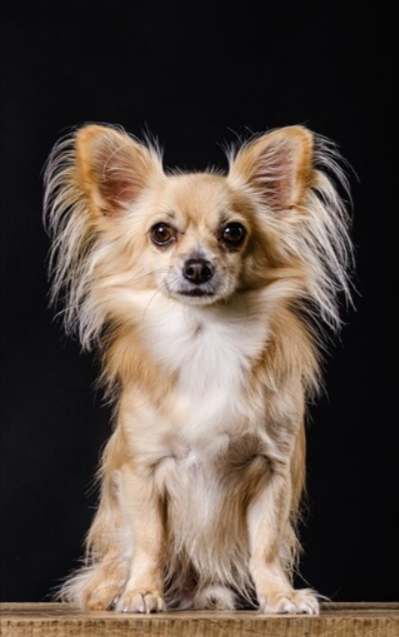
Their demand for grooming is decreased by having shorter hair. These dogs need to be brushed once a week or more frequently.
So, if you wish to reduce the quantity of fur that is tracked around your home.
2. Long-haired Chihuahua
Chihuahuas with long hair are identical to short-haired ones. However, their fur is longer. Although it isn’t very lengthy, it at least reaches a fair length.
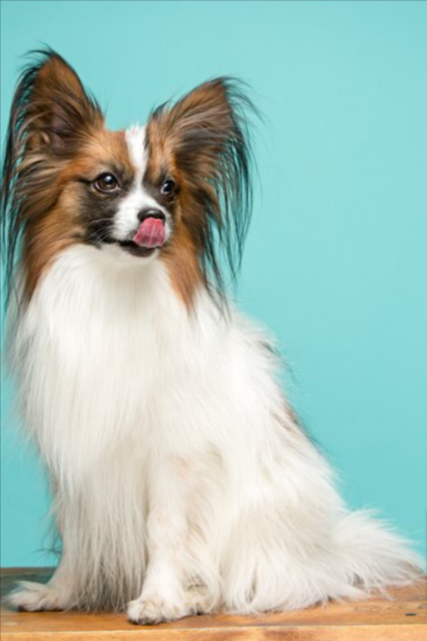
The short hair that all puppies of the Chihuahua breed are born with eventually grows out over the course of around two years. These dogs need extra brushing when it happens.
These dogs need to be brushed on a daily basis, and you must have them properly groomed. Starting early can help your dog become habituated to these treatments. Training is essential to ensuring your dog cooperates with you to do the required cleaning up.
Compared to short-haired Chihuahuas, those dogs are less common. You might need to take a little more time looking for a puppy.
3. Deer-headed Chihuahua
Apple-shaped heads are common in Chihuahuas. This is a typical head shape. However, the deer-headed Chihuahua also exists.
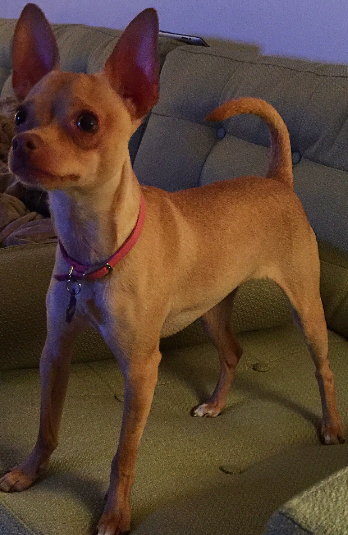
They lack a curve in their noses and have significantly longer skulls. Additionally, these dogs are typically a little bigger.
Several breeders bred these dogs to improve the health of the Chihuahua breed. However, they have become too large to participate in dog competitions and shows.
As a result, it is difficult to find such pups. You must choose particular breeders who concentrate on these puppies. Since they are specialty pets, they cost a little bit extra occasionally.
4. Apple-headed Chihuahua
Most chihuahuas are born with Apple-shaped heads, which is pretty common in dogs. All kinds of breeds have a little bit of an apple shape on the upper side of their head.
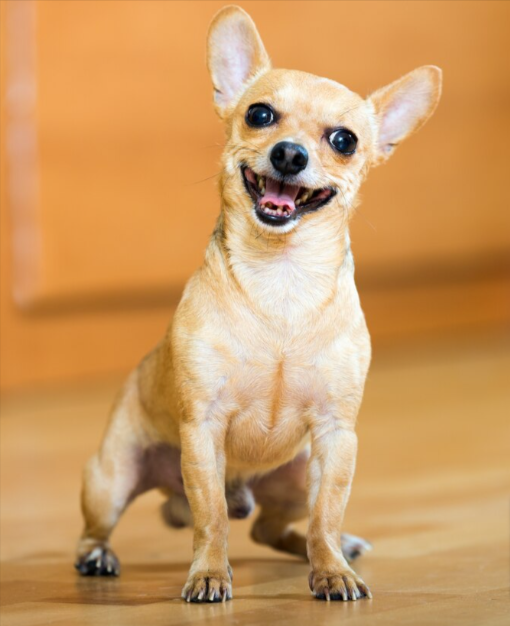
However, Chihuahuas have proper apple-shaped heads and a sloped nose, and somehow, all Chihuahua puppies fall into this category in their initial stage.
Moreover, these dogs might come with a little bit of a short muzzle, and many of them also have a soft spot called molera on their skull.
In some cases, this soft spot fills up as the dog grows old, and sometimes, it stays the same and might raise a health risk. This hole is also one of the reasons why breeders developed the deer-headed chihuahua dogs.
5. The Teacup Chihuahua
These dogs can have any head shape and any length of fur. They differ from other Chihuahuas, though, in that they are smaller. Some breeders are constantly trying to modify their canines to fit the demands of customers. This frequently denotes a smaller Chihuahua.
The issue with smaller Chihuahuas is that health issues are more likely to affect them. Chihuahuas are already little dogs.
You squeeze the entire dog’s interior structure into a smaller area when you attempt to make them even smaller. Many teacup Chihuahuas don’t live through puppyhood due to cognitive problems that they frequently have.
6. Pear-headed Chihuahua
Chihuahuas with apple heads and deer heads occasionally don’t work out. The pear-headed Chihuahua is what results from crossing these two head forms.
However, this is largely seen as a flaw rather than a novel head type. However, some breeders may attempt to mark up the price of these puppies because of their rarity.
These dogs frequently deviate from the breed standard by being heavier and taller. Their muzzle resembles a deer, and their skull is wider at the top and narrows into it.
Is it easy to adopt long-haired chihuahuas?
Even if you adopt a chihuahua while following the trend, you have to make sure to be committed to the dog. The thing is, chihuahuas are more likely to end up in shelters after people abandon them after regretting.
Related Reads
- Dog Names In Spanish & Meaning
- Red Dog Names For Your Fiery Friend
- Japanese Dog Names And Types Of Breeds
Conclusion: Is a long-haired chihuahua ideal for you?
While choosing a dog of long-haired chihuahua breed, you need to make sure they can easily adapt to your lifestyle and your home suits their requirements. Therefore, I suggest you consider the following pointers before getting a long-haired chihuahua for yourself:
- If your chihuahua will be your only pet.
- If you want a fierce toy dog.
- If there are no children in the house.
- If you’re willing to maintain and groom the dog regularly.
- If you’ll be able to provide a safe environment for a chihuahua.
Keep these pointers in account, make a wise decision, and turn a chihuahua puppy into an ideal pet dog.
